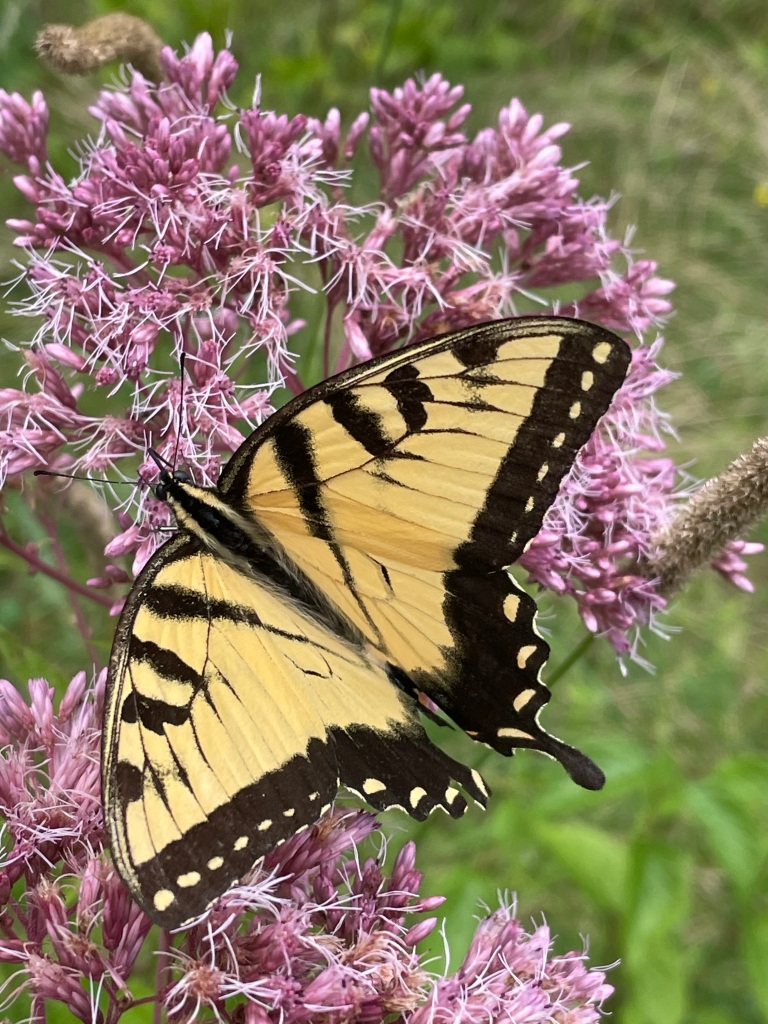
Our wrinkles, scars and other blemishes make us who we are. They are our story.
The same is true for butterflies. Not all butterflies look like the perfectly drawn or photographed models in field guides. In fact, most of them don’t.
It wasn’t until I started photographing wildlife (many years ago at this point) that I even noticed. I’d take a great shot of a tiger swallowtail butterfly and check the image when I got home. (Or, in the old days, when the film was developed and photos processed.) Then I’d notice the butterfly was missing part of its wing. Or I would compare photos of two butterflies and notice that one is much more colorful than the other.
Yes, butterflies have blemishes too, and the scars are reflective of the trials of life in a dangerous world. The blemishes come from a variety of sources: a predator tried for a meal and came up with only a piece of a wing, a run-in with another large insect, a particularly prickly thistle plant, a harsh storm and, yes, age. Just like wrinkles betray the age of us humans, faded wings show the age of a butterfly.
In my experience, the most common wing imperfections among butterflies are the missing tails on the back wings of a swallowtail. The excitement of getting a perfect shot of a swallowtail is often subdued by noticing that the insect is missing one or both of its “tails.” It’s still a great shot and the butterfly is still beautiful, but it’s not the shot that was expected. Those missing tails are likely the result of a close call with a bird.
The other day I had a similar experience. My butterfly identification skills are average at best, so I get excited when I see something other than a monarch or swallowtail. I tromped through a field to pursue an at-the-time unidentified butterfly. It lured me into the tall grasses like a siren song. Before I knew it, I was standing in shin-high poison ivy, waist-high grass, and eye-level ironweed and Joe-Pye-weed. I was in hot pursuit, so I kept going.
Finally, I caught up to the temptress. Throughout the entire pursuit, I saw only its right wing. When I got a close look at last, I noticed that its left wing was nearly completely gone. Something drastic had happened to this butterfly, but it survived and flew about the meadow just fine. Nature is amazing.
For those keeping score at home, it turned out to be a great spangled fritillary. It’s not a rare butterfly by any means, but it caught my attention, and it was a fun chase. And, yes, I got poison ivy on the back of my calf a few days later. It wouldn’t be summer without me catching poison ivy at least once. Luckily, I didn’t find any ticks on me.
There are many adjectives to describe butterflies: peaceful, graceful, beautiful, delicate, fascinating. We can add these not-so-romantic adjectives to the list: resilient, durable, tough, rugged, indefatigable. We probably won’t see any of those later words in any poems about butterflies, but they are just as descriptive and accurate.
September is a good month for watching butterflies, particularly monarchs as they head south for their incredible migration to Mexico. I know I’ll be out there looking.

Interesting article, thanks for making me think beyond the anticipated beauty of our butterflies. 💖
LikeLike